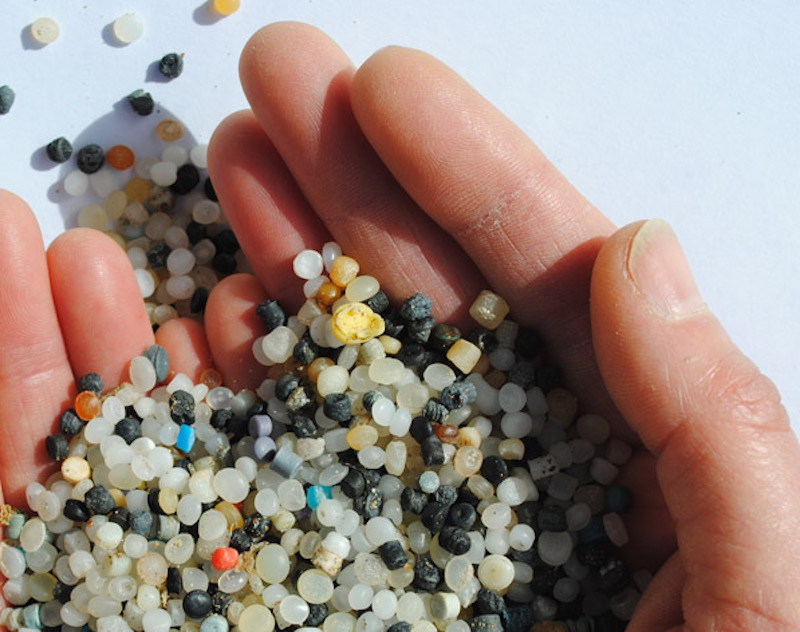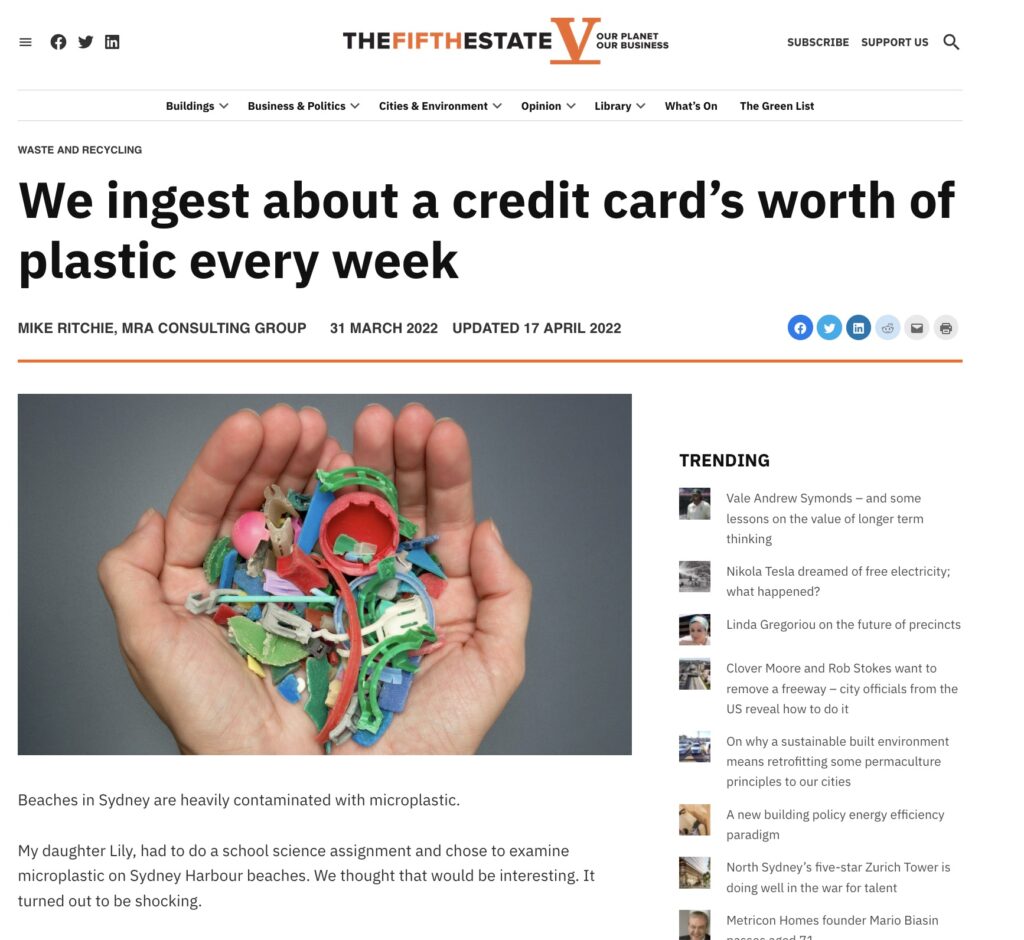Sydney is drowning in microplastic
By: Mike Ritchie, MRA Consulting Group

Lily soon found the Australian Microplastics Assessment Project (AUSMAP), a nationwide citizen science initiative run by Dr Michelle Blewitt from Total Environment Centre along with Dr Scott Wilson from Macquarie University. Their methodologies aligned well.
Basically, you lay out a frame and collect a depth of sand from the beach, then spend tedious hours sieving and tweezering plastic out of the mix. Microplastic is plastic less than 5mm. Lily only measured to 1mm but microplastics get very small. Obviously, the smaller you sample the more you find as microplastics continually break down with exposure to the environment.
The existing science based on Dr Wilson’s work for Sydney includes: Manly Cove with 4,051 pieces of microplastic/m2, Tower Beach Botany 4,312, Athol Beach Mosman with 1,052 and Cabarita with 1,000.
So Lily sampled 6 beaches along the Parramatta River to Sydney Heads. These were Putney, Cabarita, Rodd Point, Hunters Hill, Whiting Beach and Camp Cove.
Every beach had macro plastic litter – paddle pop sticks, plastic bags, drink containers etc. But the real shocker was the amount of microplastic in the sand.
Tweet
Even limited to 1-5mm pieces Lily found 700 pieces of microplastic/m2 at Whiting Beach and 400/m2 at Cabarita. The lowest contamination rates were at Rodd Point and Camp Cove.
Why? The science suggests that microplastics are washed downstream from industry and our homes, it floats around in the harbour and eventually gets washed out to sea or swept onto certain beaches by the prevailing wind and currents. Whiting beach for example faces south and is battered by SE prevailing winds. It has the longest fetch (distance over which wind can flow uninterrupted) meaning more plastic can be blown towards it. But the science is not clear yet. More data is required. (So, if your kids want a cool science experiment, think about joining AUSMAP).
What astounded me was the number of ‘nurdles’. These are the precursor pellets from which you make plastic products. These are manufactured products made out of virgin or recycled plastic. They are purchased by plastic manufacturers to make things. They are valuable.
There were thousands of them. Why are so many floating around Sydney Harbour and washed up on our beaches? There have been some major spills such as in May 2021 when the MV X-Press Pearl spilt 1,680 tonnes of nurdles off the coast of Sri Lanka but, how they can escape from plastic moulding businesses and other users, is beyond me. It is impossible to tell how old they are. They could have been there for decades. The EPA has a lot of work to do here.
Also, there was plenty of plastic fibres and broken bits of plastic products. Dr Wilson finds more because he samples these smaller pieces.
It was not good to see pollution of this kind right in front of you.
The long term impacts of microplastic are not known. It was recently estimated that each of us ingests about a credit card worth of microplastic per week. Who knows what that is doing to our health? The University of Queensland has just announced that it has set up a lab to develop ways to detect and measure nanoplastics particles in the human body.
Surely, we can do better.
We must not accept littering, dumping of waste, industrial spillage. We must ban microbeads (a lot of industry has removed microbeads from personal grooming products, but they are still produced, imported and sold). We need to mandate that washing machines have microfilters to capture microplastic from clothes. We must get real about pollution. We need to implement the new international treaty on plastic pollution.
The first thing we need to do is support governments to increase the penalties for pollution. They are constrained by the need for public endorsement. We need to give it to them.
Singapore has a lot lower littering rates than Australia. Here is a comparison of like-for-like penalties. (The currencies are similar, so I have provided it in A$ and rounded).
- Littering – First offence by an individual in Singapore is $2,000; Second offence $4,000 and Third offence $10,000). NSW is $80-250.
- Disposal of waste from a vehicle in Singapore is up to $50,000 (or up to 1 year in jail). NSW is $250-500.
- Illegal dumping – Singapore $50,000 first offence. Second offence is $100,000 and a mandatory jail sentence of up to 1 year. NSW $7,500-15,000.
You get the picture. We can, and must, do better.
This stuff just accumulates and if it is bad now, it will be worse in the future.
Mike Ritchie, is the Managing Director at MRA Consulting Group.
This article has been published by the following media outlets:




